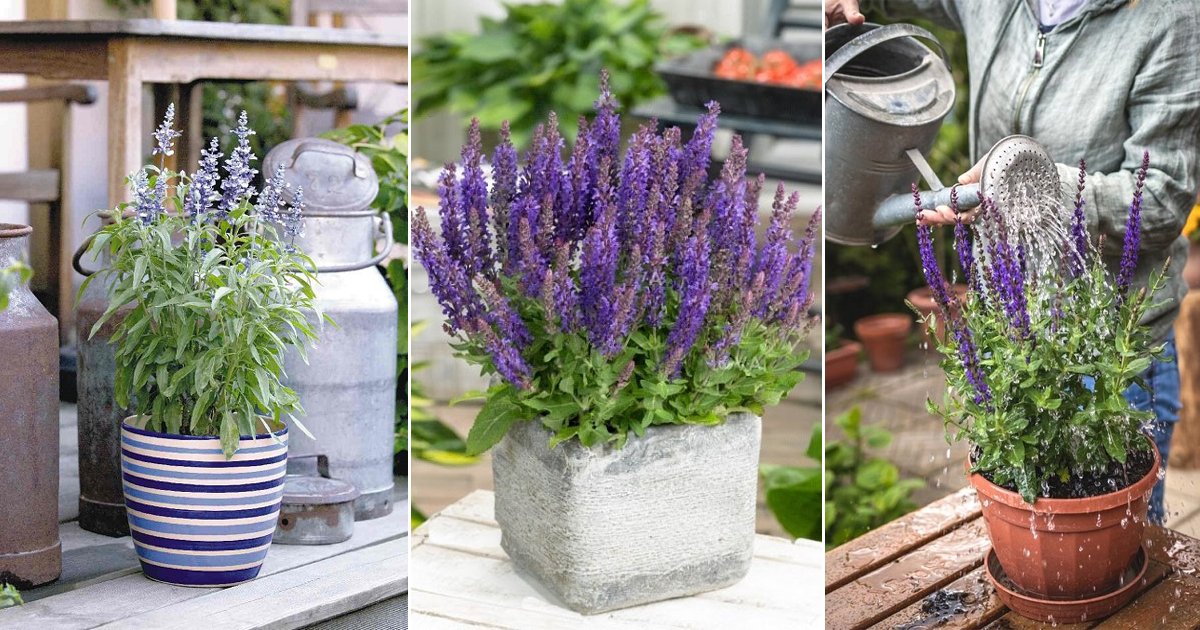Overwintering Salvias in Pots: A Comprehensive Guide
Salvias are one of the most popular summer-blooming perennials, providing months of vivid color in gardens and containers. Their spiky flowers come in a huge range of hues like fuchsia, purple, red, white, and electric blue. While most salvias are hardy perennials, some types like Rockin’ and Unplugged are not cold tolerant. This means they need special care to survive the winter in pots. With preparation and protection, even non-hardy salvias can be overwintered successfully.
Why Overwinter Salvias
Salvias add so much beauty to gardens with their long blooming flowers that attract pollinators. Many gardeners want to save their favorite salvias year after year instead of replacing them annually. Overwintering lets you get a head start in spring with established plants that reshoot quickly. It can also help you propagate special varieties that may be hard to find.
Challenges of Overwintering Pots
Trying to overwinter container plants outdoors is difficult, especially in cold climates below zone 8. The vulnerable roots are exposed to harsh wind, precipitation, and dramatic temperature swings in above-ground pots. This can lead to desiccation or rot. Placing pots in an unheated, sheltered space like a garage or shed protects the roots better over winter.
Best Practices for Overwintering Pots
Location – Unheated garages or sheds are best allowing plants to go dormant without freezing. Temperatures below freezing for extended periods will damage roots.
Container – Use thick, insulating ceramic or plastic pots to protect roots from cold and retain moisture. Avoid small containers.
Pruning – Cut back leggy growth to 4-8 inches so no energy is wasted on unneeded leaves.
Watering – Keep soil slightly moist but not wet to prevent rotting. Check regularly.
Insulation – Place pots on foam boards or wood pallets to insulate from cold ground. Cover with straw.
Spring Care – After frost risk passes, set pots back outside. Wait to fertilize until plants are actively growing.
Ideal Conditions by Salvia Type
-
Rockin’ Playin’ the Blues (Zone 7 hardy): Overwinter in zone 8-9 protected location. Use a ceramic pot and keep drier.
-
Unplugged So Blue (Zone 8 hardy): Overwinter in zone 9-10 shed or garage. Select a large, insulated pot and don’t overwater.
-
Rockin’ Fuchsia (Zone 9 hardy): Overwinter only in zone 10-11 space. Use the biggest pot possible and water minimally.
Potential Problems and Solutions
Limited regrowth – Root damage from cold. Try more insulation next year. Or underwatering caused root desiccation so maintain slight moisture.
Sudden collapse – Excess winter moisture likely caused root rot. Water minimally while dormant.
Leggy growth – Too little light after overwintering. Gradually introduce to full sun in spring.
Leaf drop – Shock from rapid changes in temperature or light levels. Harden off slowly.
Failure to bloom – Overfertilizing too early caused weak, lush growth that won’t flower. Avoid fertilizer until established.
Overwintering Tender Salvias in Pots
Warm climate gardeners are lucky when it comes to overwintering salvias. In zones 9-11, the Rockin’ and Unplugged series will survive the winter easily with little to no protection needed. Just provide good drainage and prune any dead growth in late winter before new shoots appear in spring. Transition back to full sun slowly.
The challenge comes for gardeners in zones 7 and below who want to overwinter containerized salvias rated at zone 8 or 9. This requires creating the right microclimate and properly prepping pots. Focus on insulation, protection from wind and extreme temperature swings, and careful moisture monitoring to avoid desiccation or rot.
Even if your overwintered salvias don’t make it, you can always buy new plants in spring. But following these key tips will give you a much better chance at successfully overwintering non-hardy containerized salvias through frigid winters. With the right conditions and care, you can save your favorite salvias to enjoy again next year.

Cutting Back Salvia For Winter
Salvia doesnt need to be cut back except as necessary when older growth has shriveled up. The end of fall is a great time to prune your salvia to remove any of the older growth.
Protecting Salvia in Winter
If you have salvia planted within the ground of your landscape and it is at or below your growing zone, the maintenance needed is minimal! For extra measures, add some wood mulch to further protect the roots during frosts and freezes.
If your salvia is either rated for growing zones above your zone or you’re growing saliva in a thin pot or container, extra precautions must be made. You may choose to either bring in your salvia to your indoor space or transplant your salvia to a sunny, protected area and insulate using wood mulch.
Preparing Salvia for Winter/Spring
FAQ
Do salvias come back every year in pots?
Perennial salvias come back each year. They die back to the ground in winter and re-sprout in spring. Annual salvias, however, complete their life cycle in one year and do not return. In pots, perennial salvias may need extra protection during winter, especially in colder climates.
What is the coldest temperature for salvias?
In winter, guard against frost—Salvia’s no fan of the big freeze, with most varieties hardy only to -10 to -20°F (-23 to -29°C). Keep it cozy, but not tropical, to mimic their natural conditions.
What not to plant with salvias in pots?
Plants Not To Grow With Salvia
Impatiens and coral bells are plants that do not work well in a shared space with salvia. The care needs of these plants are too different from salvia, so the conditions that make one plant thrive would be detrimental to the others.
Which salvias are frost hardy?
Fully hardy salvias, such as Salvia nemorosa, S. verticillata, S. pratensis, and S. sylvestris, can withstand winter temperatures as low as -22°C.
